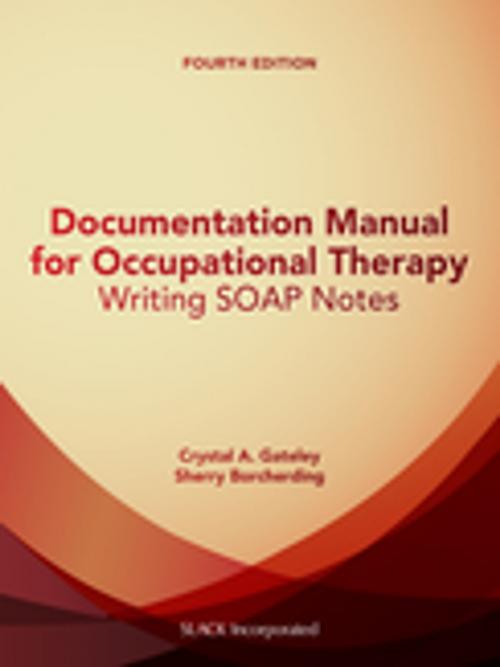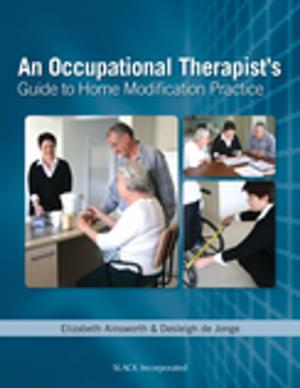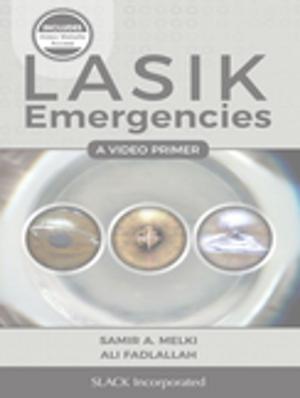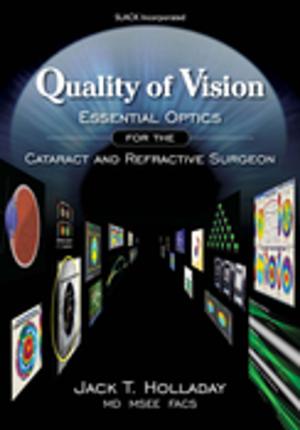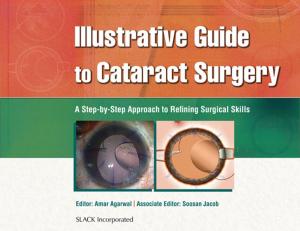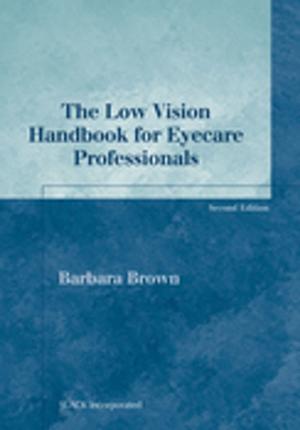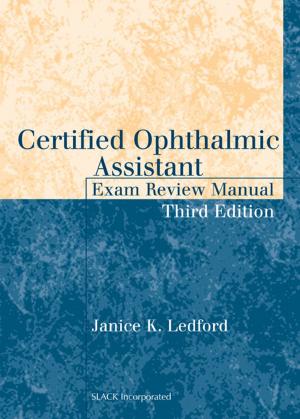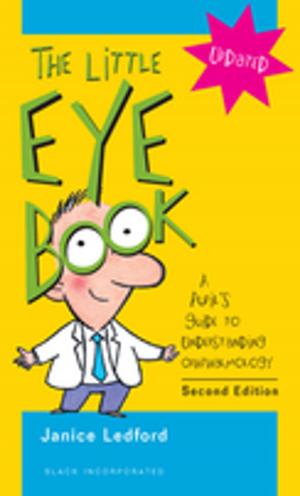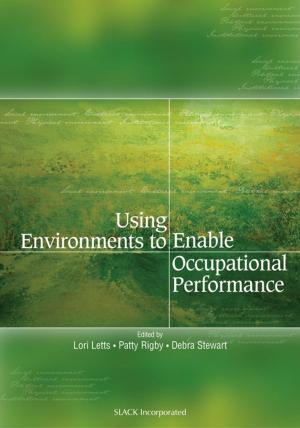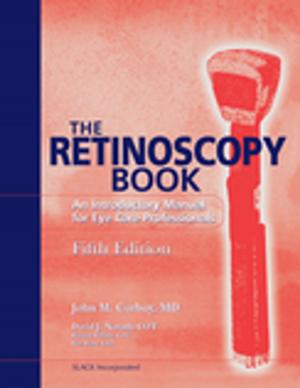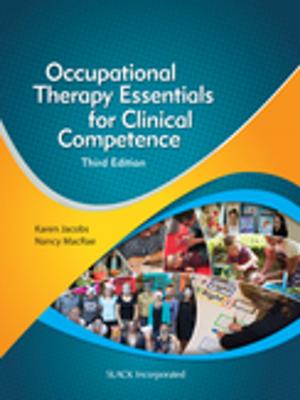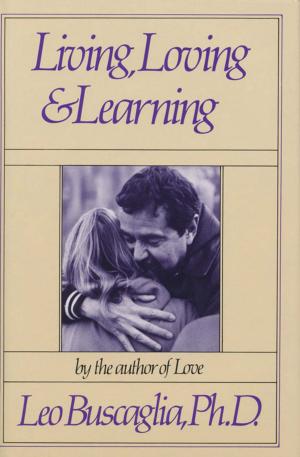Documentation Manual for Occupational Therapy
Writing SOAP Notes, Fourth Edition
Nonfiction, Health & Well Being, Medical, Allied Health Services, Occupational Therapy| Author: | ISBN: | 9781630912321 | |
| Publisher: | SLACK Incorporated | Publication: | August 15, 2016 |
| Imprint: | SLACK Incorporated | Language: | English |
| Author: | |
| ISBN: | 9781630912321 |
| Publisher: | SLACK Incorporated |
| Publication: | August 15, 2016 |
| Imprint: | SLACK Incorporated |
| Language: | English |
One of the most critical skills that occupational therapists must learn is effective documentation. With that idea in mind, Documentation Manual for Occupational Therapy: Writing SOAP Notes, Fourth Edition presents a systematic approach to a standard form of health care documentation: the SOAP note. The clinical reasoning skills underlying SOAP note documentation can be adapted to fit the written or electronic documentation requirements of nearly any occupational therapy practice setting. This new Fourth Edition has been updated to reflect current information essential to contemporary occupational therapy practice, including the AOTA’s Occupational Therapy Practice Framework: Domain & Process, Third Edition. Documentation Manual for Occupational Therapy, Fourth Edition also includes the COAST method, a specific format for writing occupation-based goals. Crystal Gateley and Sherry Borcherding use a “how-to” strategy by breaking up the documentation process into a step-by-step sequence. Numerous worksheets are provided to practice each individual skill as well as the entire SOAP note process. In addition, examples from a variety of practice settings are included as a reference. Although this text addresses documentation in occupational therapy practice, the concepts can be generalized across other health care disciplines as well. New in the Fourth Edition: The chapter focusing on reimbursement, legal, and ethical considerations has been vastly expanded to provide an overview of sources of reimbursement, regulatory guidelines, and legal and ethical issues. A new chapter focusing on electronic documentation has been added to illustrate how the concepts presented in this text can be used in various electronic documentation software products. Faculty will have access to 12 videos that can be used for instructional purposes and documentation practice. Instructors in educational settings can visit www.efacultylounge.com for additional material to be used for teaching in the classroom. Documentation Manual for Occupational Therapy: Writing SOAP Notes, Fourth Edition presents essential documentation skills that all occupational therapy clinicians, faculty, and students will find critical for assessing, treating, and offering the best evidence available for their clients.
One of the most critical skills that occupational therapists must learn is effective documentation. With that idea in mind, Documentation Manual for Occupational Therapy: Writing SOAP Notes, Fourth Edition presents a systematic approach to a standard form of health care documentation: the SOAP note. The clinical reasoning skills underlying SOAP note documentation can be adapted to fit the written or electronic documentation requirements of nearly any occupational therapy practice setting. This new Fourth Edition has been updated to reflect current information essential to contemporary occupational therapy practice, including the AOTA’s Occupational Therapy Practice Framework: Domain & Process, Third Edition. Documentation Manual for Occupational Therapy, Fourth Edition also includes the COAST method, a specific format for writing occupation-based goals. Crystal Gateley and Sherry Borcherding use a “how-to” strategy by breaking up the documentation process into a step-by-step sequence. Numerous worksheets are provided to practice each individual skill as well as the entire SOAP note process. In addition, examples from a variety of practice settings are included as a reference. Although this text addresses documentation in occupational therapy practice, the concepts can be generalized across other health care disciplines as well. New in the Fourth Edition: The chapter focusing on reimbursement, legal, and ethical considerations has been vastly expanded to provide an overview of sources of reimbursement, regulatory guidelines, and legal and ethical issues. A new chapter focusing on electronic documentation has been added to illustrate how the concepts presented in this text can be used in various electronic documentation software products. Faculty will have access to 12 videos that can be used for instructional purposes and documentation practice. Instructors in educational settings can visit www.efacultylounge.com for additional material to be used for teaching in the classroom. Documentation Manual for Occupational Therapy: Writing SOAP Notes, Fourth Edition presents essential documentation skills that all occupational therapy clinicians, faculty, and students will find critical for assessing, treating, and offering the best evidence available for their clients.
